Almost my entire neighborhood in Altadena burned to the ground on January 7, 2025. We lost one house on our property and had an ADU damaged. Our community hopes to rebuild, but that will take a while. Below is a history of the neighborhood and its landmarks, some of which were lost in the fire.
I’ve lived in various Los Angeles areas for most of my life, but moved to Altadena in 2020. The neighborhood is just north of Pasadena. It’s a diverse and historic community with working-class bungalows, artsy Craftsman-style homes, and glamorous mansions.
Altadena is an unincorporated area of Los Angeles at the foothills of the beautiful San Gabriel Mountains between the Arroyo Seco, the Angeles National Forest, and Eaton Canyon.
How it came to be
The history of Altadena started with the Native Americans of the Hahamog’na, a band of the native Tongva tribe, who were enslaved to build the San Gabriel Mission southeast of Altadena. They settled along the Arroyo Seco from the Los Angeles River through Elysian Valley, Highland Park, South Pasadena, Glendale to Pasadena, and Altadena.
Spain briefly claimed California in 1769, lasting until 1821 when Mexico gained independence.
Rancho el Rincon de San Pascual was a 14,403-acre area encompassing what is now Pasadena, South Pasadena, El Marino, and Altadena. Father Jose Sanchez set aside the ranch for Eulalia Perez de Guillen in 1826. She was a teacher, chef, and storekeeper. The Mexican governor granted it to her second husband, Juan Marine, in 1834.
The ranch changed hands several times until the last owner, Manuel Garfias, was awarded the title by the Mexican governor in 1843. Grapes, oranges, olives, walnuts, and later dates and avocados were grown on the ranch during the early days.
When the Mexican-American War ended in 1848, Alta California became a state in 1850.
Altadena founding fathers
Benjamin Wilson, who became known as Don Benito, and his wife Margaret arrived in 1852. They got into politics, and he became a justice of the peace. Wilson was a benevolent man who worked with the Native Americans in the area and established a ranch and vineyard in San Gabriel. He also led expeditions up the San Gabriel Mountains, adjacent to Altadena. Mount Wilson and the Mount Wilson Observatory were both named after him.
Judge Benjamin Eaton and Dr. John S. Griffen were business associates. They both arrived in Rancho San Pascual in the early 1850s and acquired Rancho San Pascual from Garfias, who had defaulted on a loan they gave him. Griffin later became known as one of the fathers of East Los Angeles. Eaton Canyon is a favorite LA hiking spot with a waterfall and was named after Judge Eaton.
Griffen and Wilson also acquired a small amount of land that was part of Rancho Santa Anita, which was later sold as part of Rancho San Pascual. That part of the land is now Altadena Drive.
Griffen had been an army surgeon but became rich in real estate. He was also the mayor of Los Angeles in 1851 and served two terms in the State Senate.
Eaton, Griffin, and Wilson needed water to irrigate their land. At the time, the Arroyo Seco, where the Rose Bowl is now located, was filled with water. The three worked together in 1867 to build Wilson’s Ditch. It was an irrigation site that brought water from the Arroyo to Altadena, making it a more attractive place to live.
Captain Frederick Woodbury and his brother John moved to California from Iowa and bought a large portion of land in the area. It became a subdivision in 1887 and was named after the Altadena Nursery, which had been started by Byron O. Clark years before. The word “Alta” means above (Pasadena), and “dena” means “Welcome.”
The Woodburys developed the Altadena Improvement Plan and built an upper-crust millionaire’s row on Mariposa Street near Santa Rosa Avenue.
Frederick’s house was built in 1882 and still stands on Madison Avenue. It is known as the Woodbury-Story house and has been used as a filming location for movies like Amityville Horror, American Horror Story, True Blood, and others. (This house was not burned)
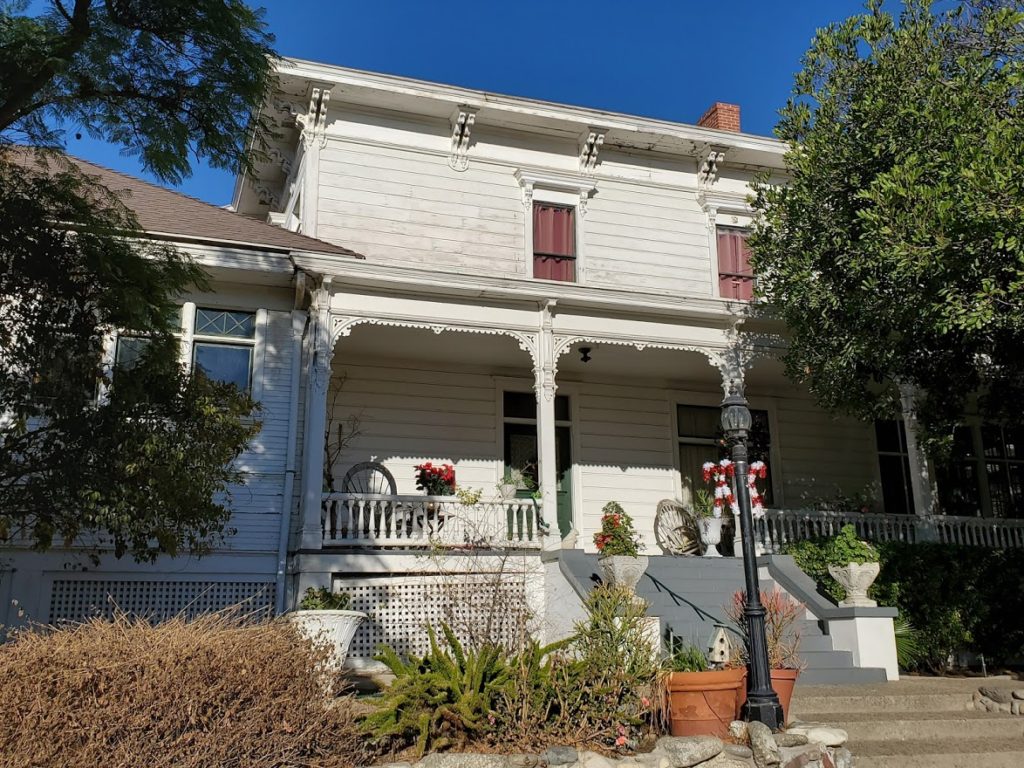
The community evolves and becomes more diverse
During the 1940s, artists, writers, and bohemian types moved into Altadena, adding to the area’s character.
The ’60s and ’70s brought in a more diverse population when whites began to move out who opposed school integration. Modern-day Altadena is now a laid-back community with a mix of cultures, ethnic restaurants, hiking trails, and turn-of-the-century architecture, giving it character and beauty. Over 7,000 of its homes and businesses burned in the fire.
Christmas Tree Lane
Frederick Woodbury had visited Italy and fallen in love with the Deodar Cedar trees he saw there. He imported 150 Deodors from Italy in 1885 and planted them with Chinese labor on Santa Rosa Avenue in Altadena.
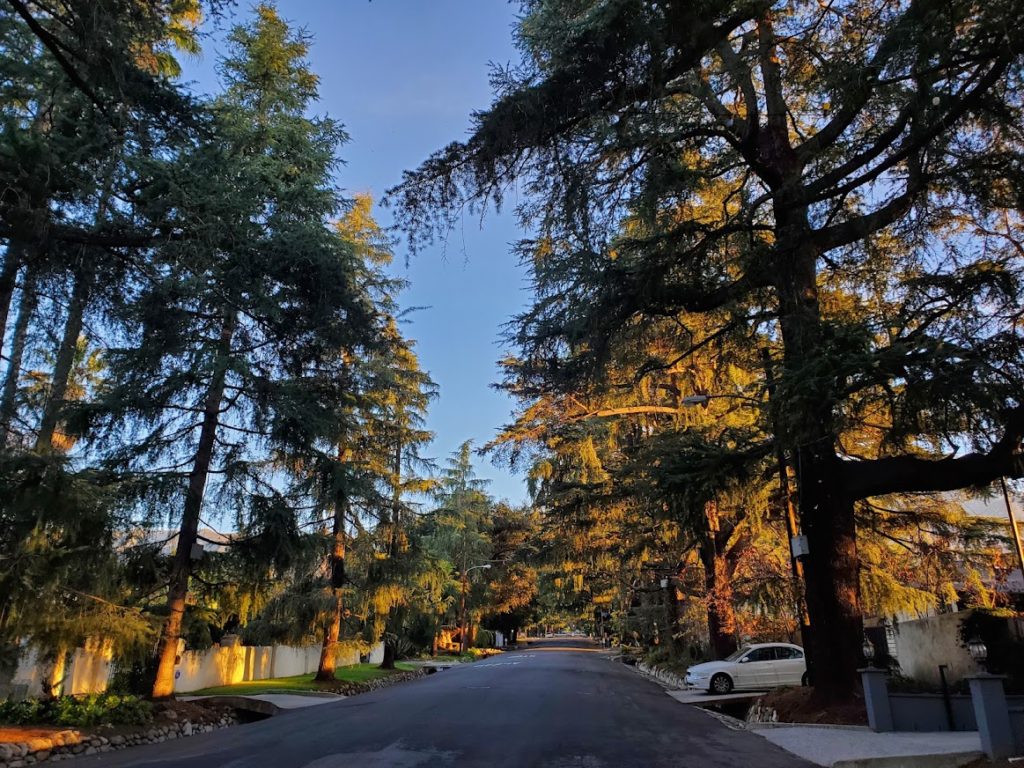
A quarter-of-a-mile tree-lighting spectacle was organized around the Deodars in 1920, with the tall and majestic trees decorated with strings of lights. It is now called Christmas Tree Lane and has been lit almost every year for the last 100 years. The holiday attraction is the oldest large-scale Christmas display in the world. It became a California Historical Landmark in 1990 and is on the National Register of Historic Places.
Miraculously, most of the homes and trees on Santa Rosa Ave. survived the fire.
Mt Lowe Railway
A civil engineer named David McPherson was commissioned by Thaddeus Sobieski Lowe, an Altadena businessman, to build the Mt. Lowe Railway. It was ready for visitors by 1893 and was in operation until it was abandoned in 1938. The railway took tourists from the Green Hotel in Pasadena (now Castle Green) up to the foot of the mountain, where a funicular brought them 2,000 feet to the top. It was known as the “eighth wonder of the world” for several years.
A resort was constructed at the top of the mountain called Echo Mountain House. It had 70 rooms, a casino, and a dance hall. Along with a zoo, tennis courts, an observatory circular fountain, a menagerie, and its own power plant, it was referred to as White City.
The trail up to where the resort was is 10 miles long and rather steep, but has a gorgeous view if you can handle it. Even though the resort went bankrupt and was destroyed, you can still see the ruins.
Other points of interest in Altadena
The McNally Mansion was a Queen Anne Victorian home built in 1887 for mapmaker and publisher Andrew McNally on Mariposa Street. He was a co-founder of Rand McNally Publishing. The home had a 3-story rotunda and a Turkish room.
At one time, McNally had a private railroad that ran from Altadena Junction to his home. The McNally home, which was often used as a filming location, sadly burned to the ground.
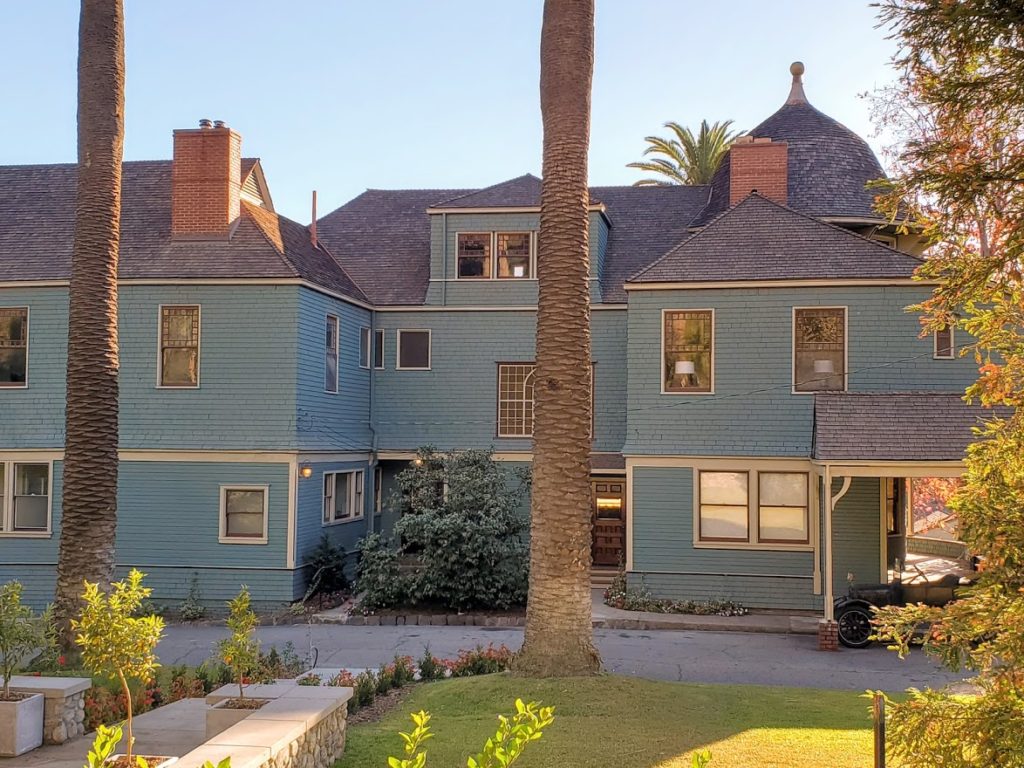
Altadena was also the home of novelist Zane Grey. Grey purchased the Mediterranean Revival-style home in 1920. The house was built in 1907 and was located on Mariposa Street west of Lake Ave. It became the first fireproof home in Altadena made of reinforced concrete.
Despite the fact that it was fireproof, the Zane Grey home was also destroyed in the fire.
The Altadena Golf and Country Club opened in 1911 and was a favorite hangout of Clark Gable and Humphrey Bogart. At one time, it also had an airstrip that Cecil B. DeMille used from 1919 to 1921. Almost the entire country club burned in the fire.
Mountain View Cemetery, established in 1882, in the heart of old Altadena, is where many of the Altadena and Pasadena founders are buried. This includes the Woodburys, Thaddeus Lowe, and others. Its magnificent mausoleum and cemetery are often used for filming movies and TV shows.
Notables like Eldridge Cleaver and George Reeves are buried there, and several Civil War veterans. The building at the cemetery had some damage in the fire.
The Bunny Museum was where you could view over 34,000 bunny artifacts, objects, etc. It was an unusual museum, but fun if you are a bunny lover. The Bunny Museum burned, but the owners are planning to rebuild it.
The ruins of the Cobb Estate are at the top of Los Flores Canyon (off Lake) and across from Echo Mountain. It is known as “the haunted forest.” It was the first stop of the Mt. Lowe Incline Scenic Railway. Visitors can enjoy a free botanical garden and hiking trails set against the San Gabriel Mountains.
Though the Cobb Estate was already demolished, the surrounding area was badly burned.

The former estate was the home of lumber magnate Charles Cobb, who purchased it as a summer retreat and owned it from 1915 – 1939. He sold it to the Masons, who converted it to a retreat for the Sisters of St. Joseph. The Marx Brothers bought it in 1956 and tore down the dilapidated home. It became public land in 1971.
The brick Full Circle Thrift Store at 2245 Lake Avenue was once the Mt. Lowe Railway and Pacific Electric Railway Substation Number 8. The building survived the fire.
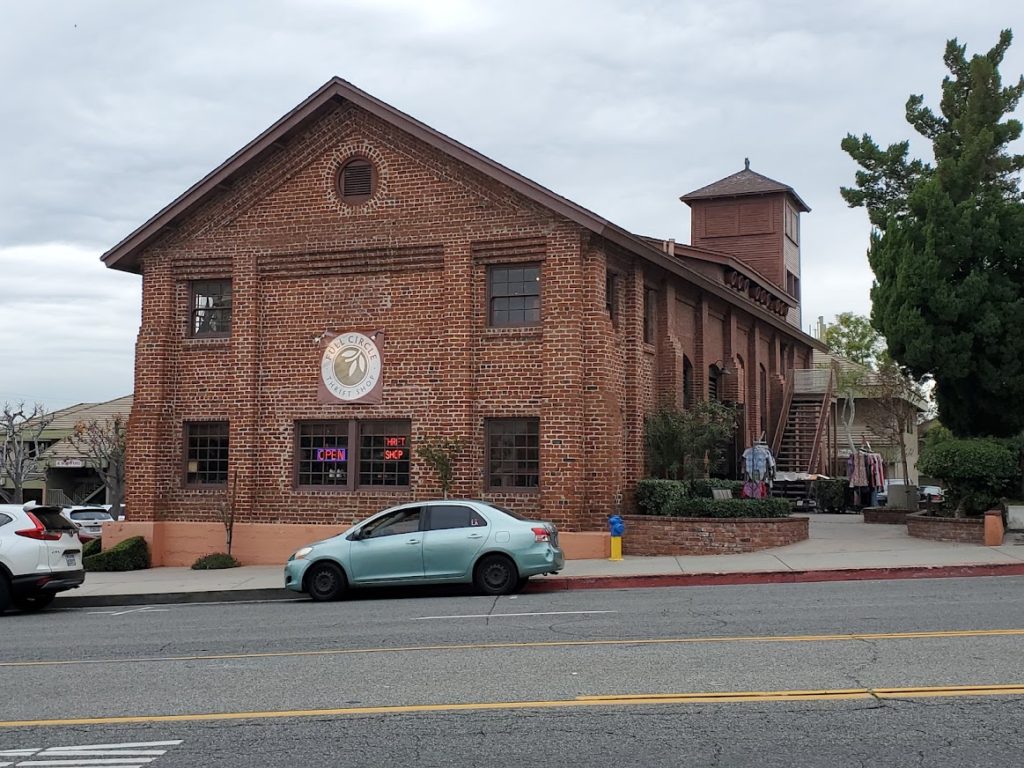
The Pasadena Waldorf School is located in the former Scripps Hall on Mariposa Street, built by William Armiger Scripps in 1904. It is a 3-story Arts and Crafts Craftsman bungalow designed by Charles W. Buchanan. The Waldorf School buildings were severely damaged in the fire.
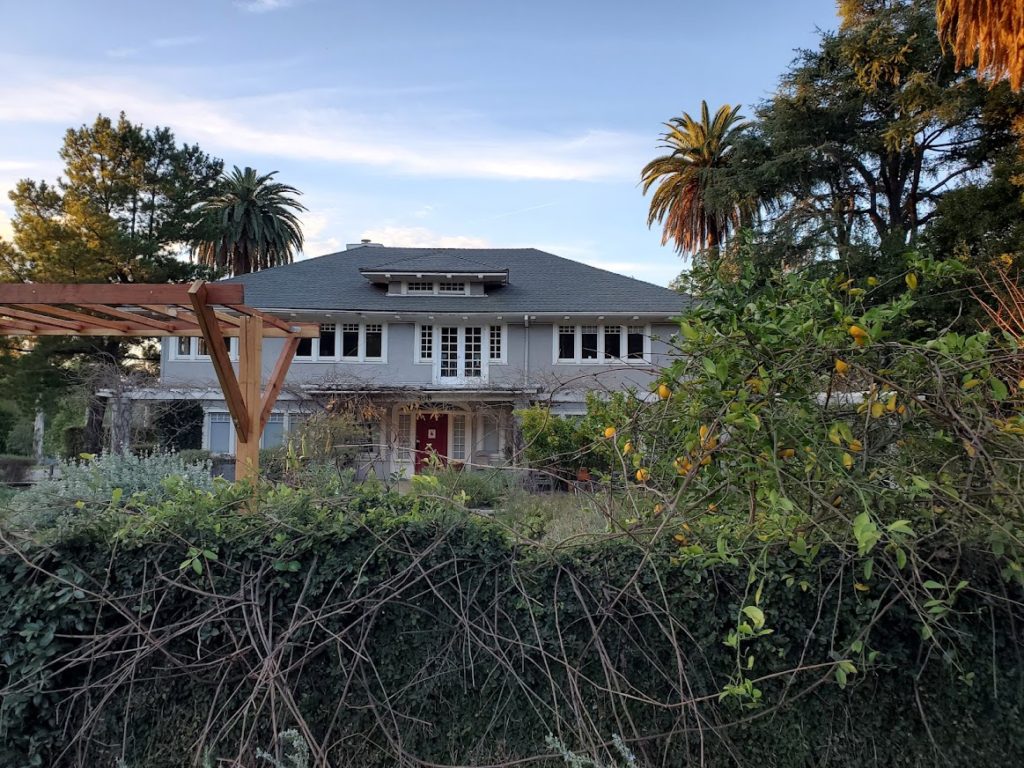
Favorite Restaurants in and near Altadena include Pinocchio, Bulgarini Gelato Vino Cucina, Pizza of Venice, Altadena Ale and Wine House, El Patron, and Nancy’s Greek Café.


Leave a Reply